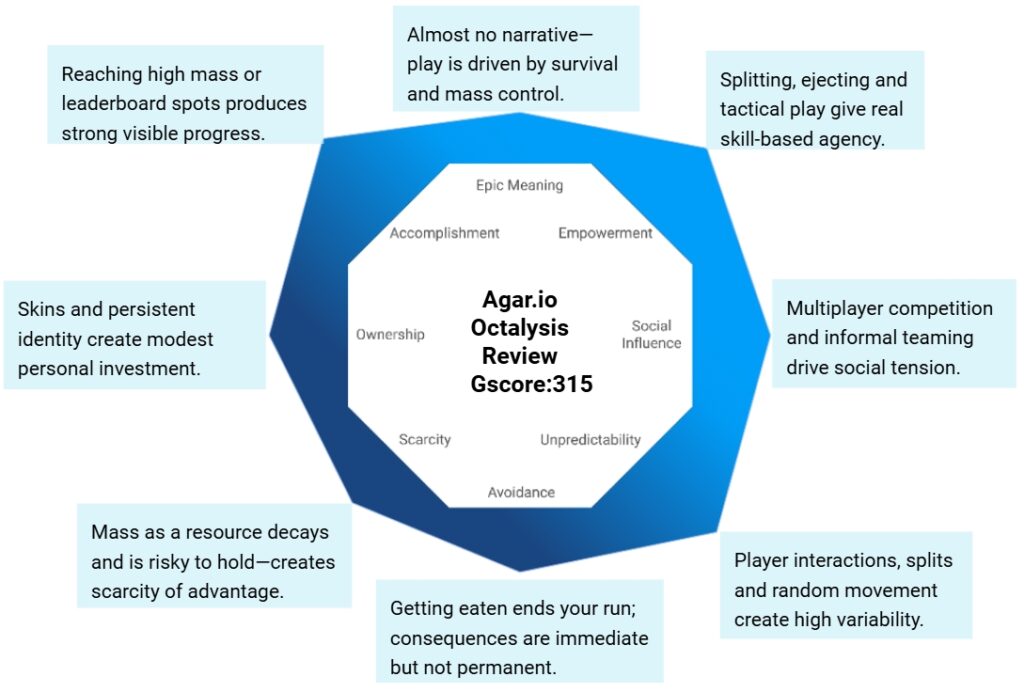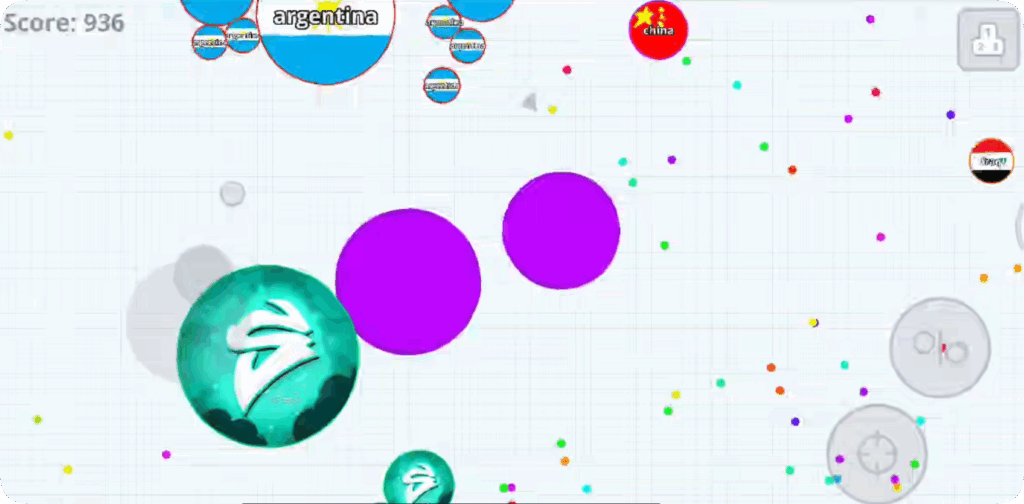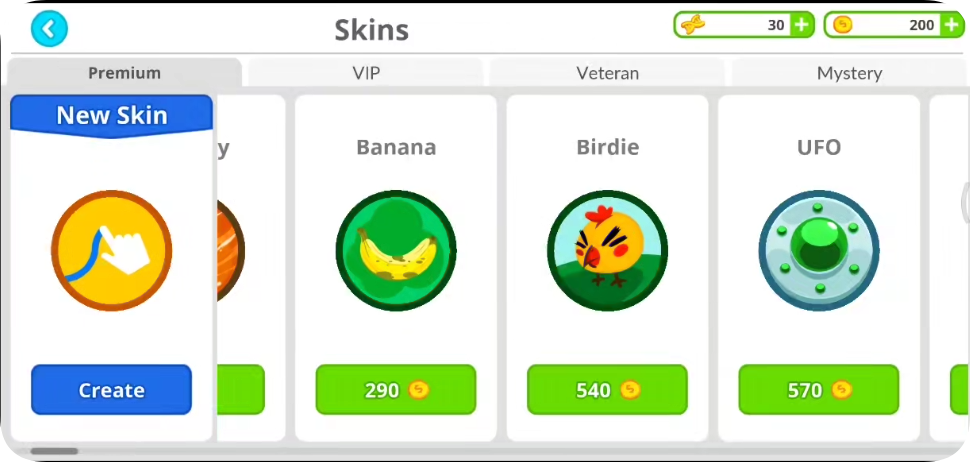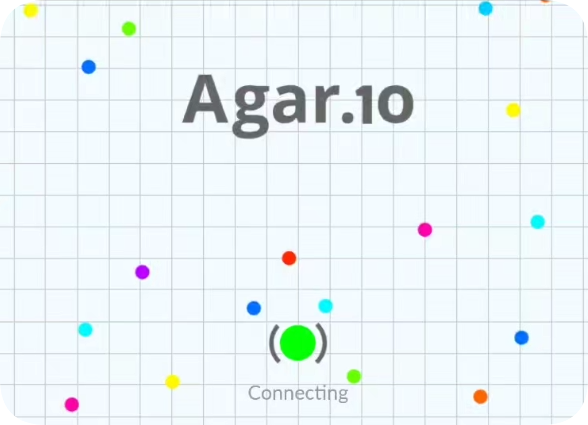A 9-minute uncut gameplay video:
In Agar.io I pilot a tiny circular cell on a shared Petri-dish arena, gobbling pellets and smaller cells to grow while avoiding larger players that can swallow me whole; the core mechanics—moving, splitting, ejecting mass, and using viruses as tools or traps—are deceptively simple but lead to intense, emergent PvP moments. The visual presentation is minimal and functional, focusing attention on positioning and split timing rather than flashiness. I keep returning for the tension of narrowly escaping a predator cell or for the thrill of a perfectly timed split that lets me absorb a rival; those moments are pure, addictive gameplay.
Octalysis Rating Table
| Core Drive | Score (1–10) | One-Line Description |
|---|---|---|
| Meaning | 4 | Almost no narrative—play is driven by survival and mass control. |
| Accomplishment | 8 | Reaching high mass or leaderboard spots produces strong visible progress. |
| Empowerment | 7 | Splitting, ejecting and tactical play give real skill-based agency. |
| Ownership | 6 | Skins and persistent identity create modest personal investment. |
| Social Influence | 6 | Multiplayer competition and informal teaming drive social tension. |
| Scarcity | 5 | Mass as a resource decays and is risky to hold—creates scarcity of advantage. |
| Unpredictability | 8 | Player interactions, splits and random movement create high variability. |
| Avoidance | 5 | Getting eaten ends your run; consequences are immediate but not permanent. |
Evaluation Notes:
Scoring range: 1-10. Higher scores reflect stronger implementation of the core drive and greater player motivation.
GScore (Gamification Score): Calculated using the Octalysis Framework t
Octalysis Radar Chart

Detailed Analysis
1.Meaning (4/10)
Agar.io offers little in the way of story or character context; the goal is purely mechanical—grow and survive. Mechanically, the game reduces player motivation to immediate objectives like feeding, splitting, or dominating territory rather than narrative progression. This minimalism keeps the focus on gameplay, but it means there’s little long-form emotional narrative. I mostly play for the raw tension of survival, not for any story.
2.Accomplishment (8/10)
Growing your mass, claiming a spot on the leaderboard, or achieving regional dominance are very visible and satisfying accomplishments. The game makes progress obvious—your cell gets bigger, covers more space, and you can see the scoreboard change. These milestones provide clear feedback and motivate repeated play. I remember a session where I climbed to #3 on the board; holding that place for several minutes felt like a real achievement.
3.Empowerment (7/10)
Players control when to split, eject mass, or use viruses defensively, and those choices separate novices from skilled players. The mechanics reward tactical thinking—splitting can be offensive or defensive, ejecting can feed a teammate, and hiding near a virus can deter larger cells. That control over moment-to-moment strategy makes you feel capable. I once split defensively to slip through a gap and escape a predator—little decisions like that make me feel in charge.

4.Ownership (6/10)
Custom skins, names, and the visual presence of your cell create a modest sense of ownership and identity in the arena. While cosmetics usually don’t alter core balance, they let you stand out and signal status to other players. Over time, players can build attachment to their playstyle and appearance. Seeing a rare skin on a giant cell always feels cool—people notice you more.

5.Social Influence (6/10)
Multiplayer interactions—chasing, fleeing, and temporary alliances—are central to the experience, and modes like Teams or Parties encourage informal cooperation. Leaderboards and social comparison add motivation, even without structured PvP beyond the arena. The social element is implicit but powerful. I’ve teamed up with random players to take down bigger threats; those ad-hoc alliances are oddly satisfying.
6.Scarcity (5/10)
Mass is a finite resource: it decays and is risky to retain because bigger players can take it. That creates scarcity of advantage and forces players to make trade-offs between aggression and safety. However, there’s no paywall gating growth—success is skill-based rather than monetization-gated. When I’m large, I guard my mass jealously because it can disappear in an instant—scarcity makes the stakes real.
7.Unpredictability (8/10)
The arena is highly dynamic: players split, bots move unpredictably, viruses change the map’s tactical picture, and pellet distribution varies. These factors combine to make each match different and keep you alert. Randomness plus human decisions yields memorable emergent moments. One match was peaceful until a giant cell split and swallowed half the map—total chaos, and I loved it.
8.Avoidance (5/10)
Being eaten ends your current run and is immediately punishing, but long-term progression (cosmetics, skills, familiarity) persists, so failure is a temporary setback rather than a catastrophic loss. The soft penalty encourages risk-taking while keeping frustration manageable. I’ve blown a huge run by mis-splitting near a virus, but losing that run usually just makes me queue up again.
Overall Summary & Recommendation
I’d recommend Agar.io to players who enjoy minimalist, high-tension multiplayer arenas where timing, split-decisions, and spatial play determine outcomes. The game’s strongest hooks are visible accomplishment and unpredictable player interactions—growing into a dominant cell and surviving sudden attacks create memorable highs. If you want structured narrative or deep single-player content, Agar.io won’t satisfy, but if you like quick, skill-driven PvP with lots of emergent moments, it’s absolutely worth a try.


Leave a Reply